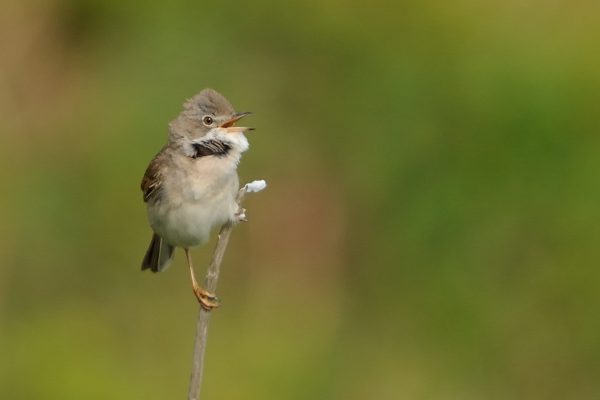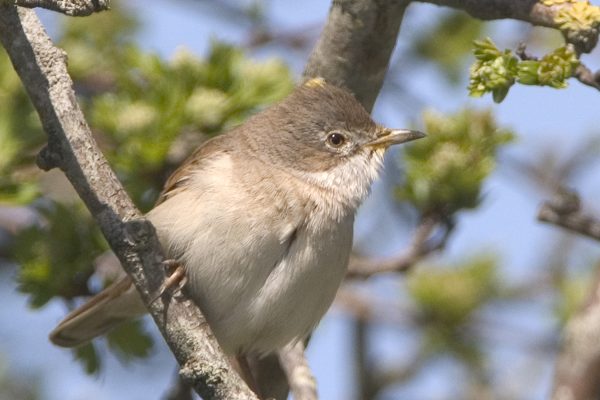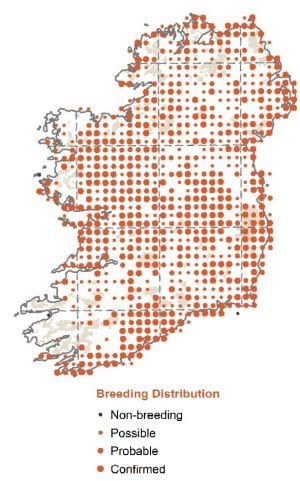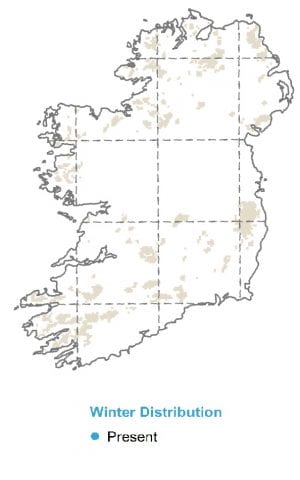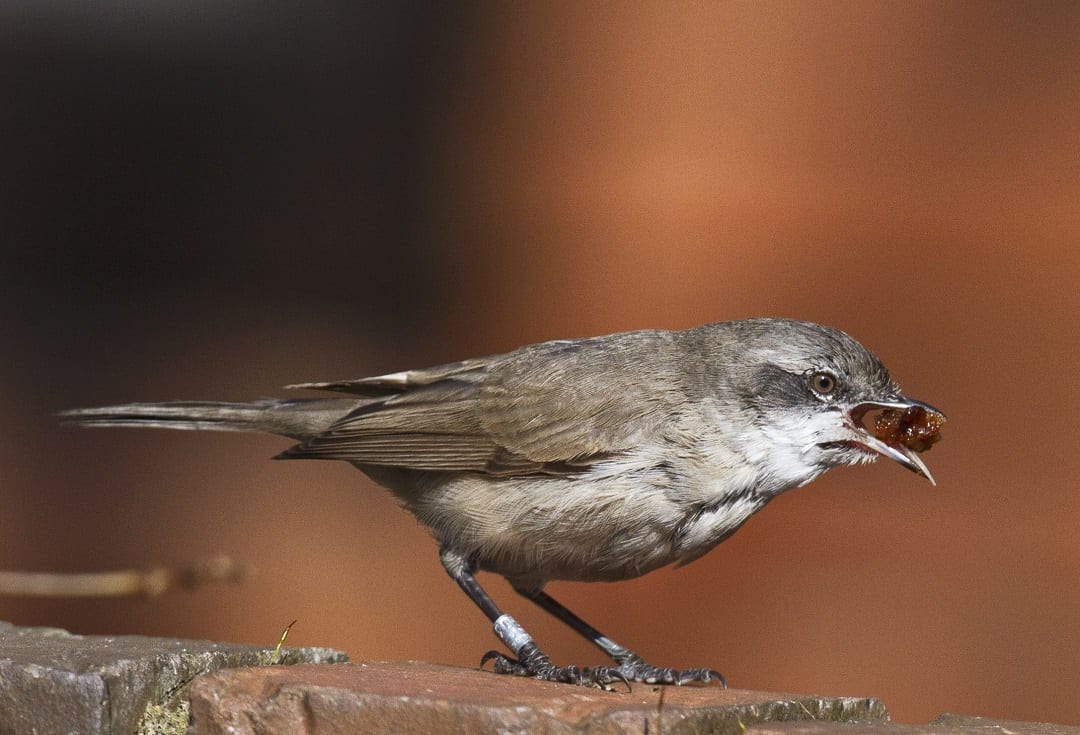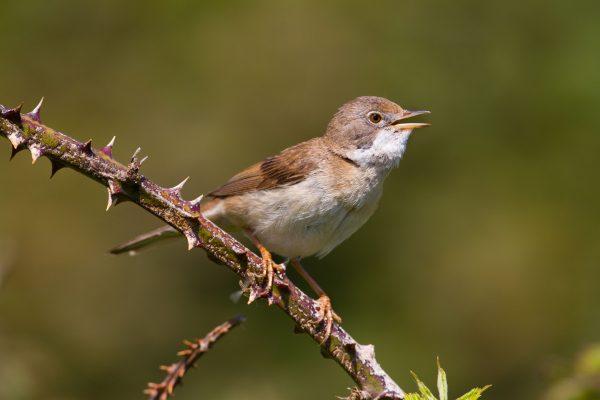
Whitethroat
| Irish Name: | Gilphíb |
| Scientific name: | Sylvia communis |
| Bird Family: | Warblers |
green
Conservation status
Conservation status
Status
Widespread summer visitor from April to September.
Identification
Slightly larger than a Robin, and one of the largest warbler species breeding in Ireland. Adult males have a pale grey head, with a large white eyering. The throat is white, with the rest of the underparts being a pinkish-brown. The back, rump and tail are a rather non-descript grey-brown. The wings are mainly black, with obvious brown centres to the feathers. Females and juveniles are nearly identical, lacking the males grey head and white eyering, but have a faint pale supercilium. The head is a grey-brown colour, as for the back and rump.
Voice
A distinctive “vaihd-vaihd-vaihd”. The alarm call is a drawn out “chaihr”, while the song of the Whitethroat is a short scratchy warble similar to that of the Stonechat. May occasionally perform a song flight.
Diet
Feeds almost exclusively on insects and other invertebrates.
Breeding
Breeds in a variety of habitats, including scrub with gorse, hedgerows and uplands.
Wintering
Common Whitethroats winter in central and southern Africa.

